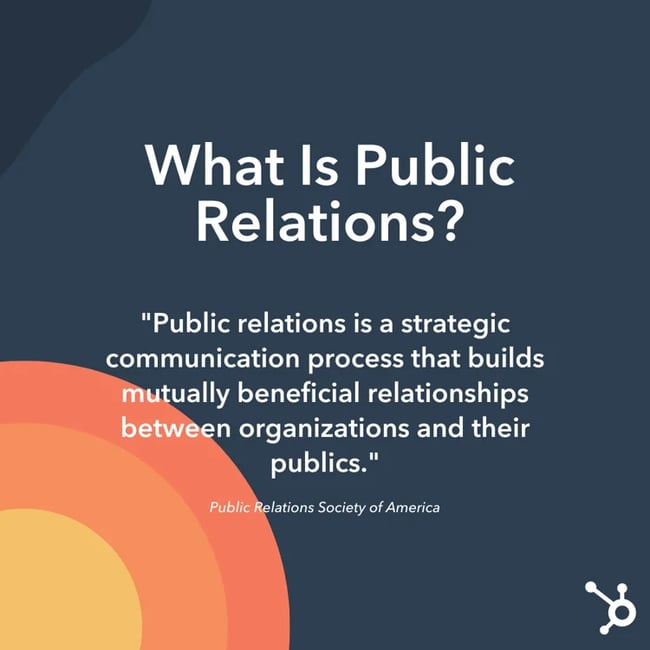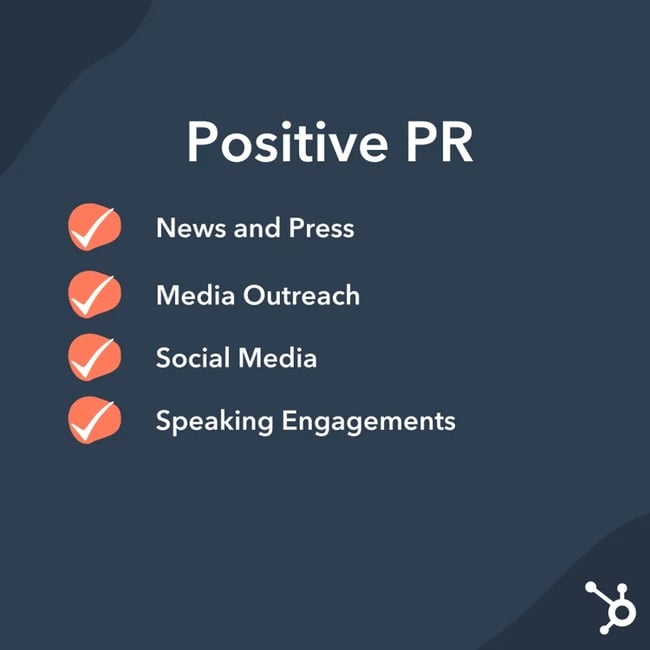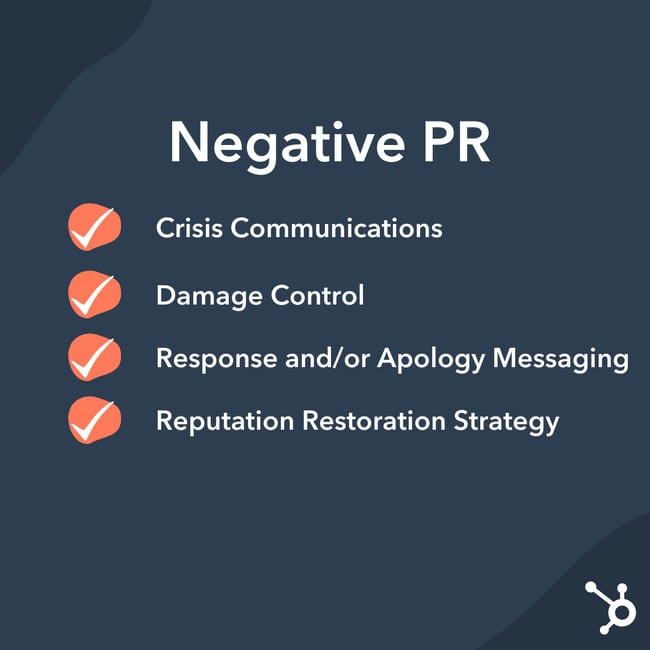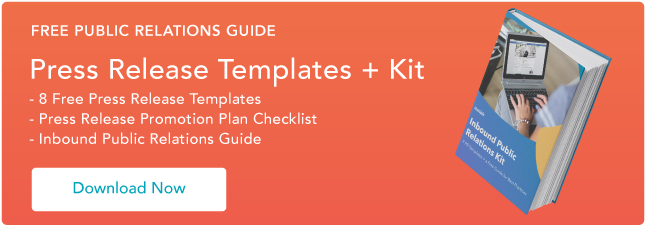Image is an important aspect of brand awareness, which influences whether your potential customers know, like, and trust you. Where publicity is outside a brand’s control, public relations (PR) is an effective way to contribute to the conversation.
In this article, we’ll define what public relations is and what to expect if choosing it for a career path.
Skip to:
There’s an old saying: “Advertising is what you pay for; publicity is what you pray for.”
Public relations isn’t an easy profession to define. In fact, in 2012, the Public Relations Society of America (PRSA) accepted a few thousand submissions before finally agreeing on one:
 So how can an organization take its beneficial relationship to the public and turn it into good press? Are you really “praying” for something, like the old saying goes, if you’re using a strategic process to get results?
So how can an organization take its beneficial relationship to the public and turn it into good press? Are you really “praying” for something, like the old saying goes, if you’re using a strategic process to get results?
If public relations is a bridge for that relationship, then public relations professionals are the bridge builders. Let’s talk about them a little more specifically:
What is a public relations professional?
A public relations professional is in charge of creating and executing a PR strategy, helping a business or individual cultivate a positive reputation through various unpaid or earned channels and formats, including press, social media, and in-person engagements. They also help clients defend their reputations during crises that threaten their credibility.
Working in PR
The path to becoming a PR professional is not linear like one for something in STEM. Instead, PR professionals often come from a variety of backgrounds including communications, political science, business, or journalism.
Despite having disparate backgrounds, most people working in PR are scrappy, problem-solvers who can think of solutions on the fly. They have great written and oral communication skills combined with an eye for detail and strong critical-thinking muscles.
Since all organizations need some form of PR, those looking for a career in the field have options across multiple industries. This makes it easy to choose a niche that interests you most. From tech to government to nonprofits — public relations professionals are in demand.
Public Relations Types
In larger companies, public relations functions are often split into different departments. Below are some of the most common.
Media: Media relations is responsible for fostering favorable relationships with external media like news organizations, blogs, and industry-related organizations.
Community: This department focuses on building a brand’s reputation within a specific community or niche. For example if a company sells camping equipment and hiking gear, it makes sense to form relationships with outdoor enthusiast organizations.
Government: Government relations is responsible for managing the relationship between a brand and a governing body. PR professionals in this role aim to influence politicians and lawmakers to get favorable outcomes for the brand. This could mean influencing certain policies or providing feedback to decision-makers about industry-specific topics.
Investor: Found in publicly traded companies, investor relations departments manage communication between shareholders and analysts.
Internal: Internal relations is responsible for communication between a brand and its employees. This department not only disseminates important company information, but also acts to quell employee dissatisfaction before it hits a public forum.
Production: This department handles one-off projects like new product or service launches, manages communication around a particular product change, or other special marketing campaigns.
In order to understand how all these PR facets work together, you must first consider the two sides of PR: the positive storytelling side and the negative damage-control side.
Positive Public Relations
 If an organization is proactive about their image, they will likely be investing in positive public relations where a PR professional helps portray the brand’s reputation, idea, product, position, or accomplishments in a positive light.
If an organization is proactive about their image, they will likely be investing in positive public relations where a PR professional helps portray the brand’s reputation, idea, product, position, or accomplishments in a positive light.
So, in a sense, you can think of PR professionals as storytellers. Unlike advertisers, who tell stories through paid methods, PR professionals tell their stories through unpaid or earned media.
These unpaid or earned avenues include:
- News and press
- Media outreach
- Social media
- Speaking engagements
Keep in mind that a PR professional isn’t just trying to reach a paying customer … they’re trying to reach everyone.
Example of Positive PR
Let’s say you work for a small interior design company, and your business just won an award: “Best Interior Design Company in Chicago.” A PR specialist might draft a press release and conduct outreach to reporters to write a story about this accomplishment to spread the news to the public.
Along with building a credible reputation for your interior design business, the PR professional is also helping the public receive relevant information about this accolade. If I’m a consumer looking for an interior designer, this announcement could help me, too.
Public relations extends to government, too. PR professionals can execute political campaigns or explain a government’s new policy to the public. In this case, you can see how PR professionals work to maintain a healthy and productive relationship between their client (the government) and the general public, who have a right to hear about new policies.
Damage Control in PR (Negative Public Relations)

PR isn’t just used for positive storytelling. It’s also used to mitigate any damage that could weaken a client’s reputation.
If public discourse around a particular brand has a negative sentiment, perhaps as a result of negative publicity or news, a PR professional’s job is to advise the organization on how to proceed.
After all, if conversations are being had, then an organization should share its side of the story. However, how they respond will have an impact on the public’s perception. If done poorly, it could make the situation worse.
A PR professional will then be tasked with:
- Crisis communications
- Damage control
- Response and/or apology messaging
- Reputation restoration strategy
Example of Damage Control in PR
In the early 1980s, numerous bottles of Johnson & Johnson’s Tylenol product were laced with cyanide by an unknown person, killing seven people. This led to widespread panic and could have resulted in the end of Tylenol products.
Johnson & Johnson took aggressive PR measures to mitigate the damage: First, the company pulled all of its Tylenol products off the shelves and issued a national statement warning consumers not to purchase or use Tylenol. Then, Johnson & Johnson created a new tamper-resistant seal and instructed 2,000 sales personnel to deliver presentations to the medical community to reintroduce these new, safer Tylenol bottles.
This effective PR strategy saved Johnson & Johnson’s reputation as well as their product — in fact, Tylenol shares climbed back up to 24 percent just six weeks after the cyanide crisis.
In the case of Johnson & Johnson, a simple advertising campaign wouldn’t have worked. Instead, PR was necessary: PR professionals were able to spread a story that portrayed Johnson & Johnson as a company that puts consumers ahead of profit. Along with mitigating damage to Johnson & Johnson’s reputation, PR was used to save more people from consuming cyanide-laced Tylenol, and then used to inform the public that Tylenol was safe again. A win-win-win.
PR as an Important Marketing Strategy
In these examples, you can see PR professionals are adept at handling a wide variety of both good and bad circumstances and must address these events so the public and client can maintain a beneficial relationship. PR specialists also play a role in advising management on the best policy decisions or actions to take and conducting programs, such as fundraising or networking events, to help the public understand the organization’s goals.
PR isn’t just used to influence a story after it happens — it’s also used to write that story in the first place.
Editor’s note: This post was originally published in April 2018 and has been updated for comprehensiveness.


